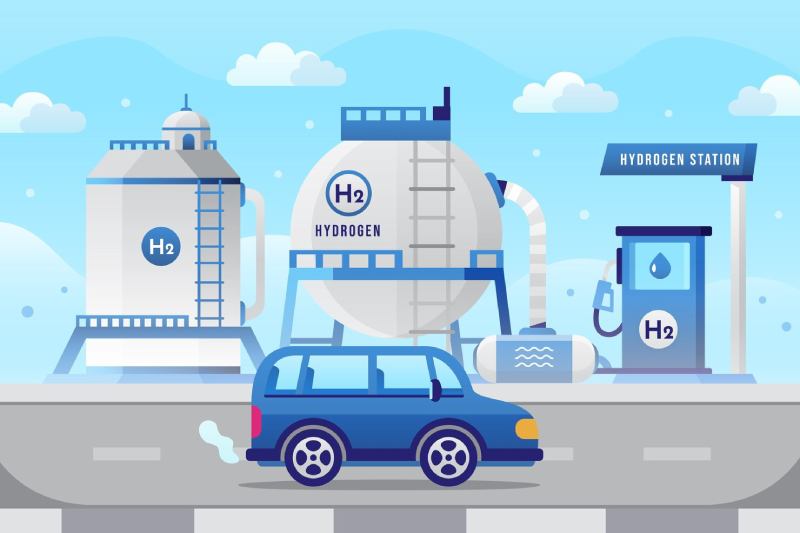Ghana, officially known as the Republic of Ghana, is a coastal country located along the Atlantic Ocean in West Africa. It spans approximately 238,533 km² and is bordered by Côte d’Ivoire to the west, Burkina Faso to the north, Togo to the east, and the Atlantic Ocean to the south.[1] Ghana’s diverse landscape features rainforests, savannahs, and numerous rivers, with the Ashanti region historically serving as a major hub for cocoa, timber, and mineral production like bauxite[2]
As of 2023, Ghana’s Gross Domestic Product (GDP) stood at USD 76.37 billion.[3] The services sector is the largest contributor, accounting for approximately 43 per cent of GDP, followed by industry (29 per cent) and agriculture (21 per cent).[4] Ghana’s economy is strongly export-oriented, with gold, cocoa, and oil as key commodities. Cocoa alone contributed nearly USD 2.85 billion in 2023, representing about 16.4 per cent of total exports.[5]
Ghana’s energy sector is largely powered by hydro and natural gas-based thermal plants. In 2023, the country had an installed electricity generation capacity of about 5.7 GW, with renewable sources contributing around 36 per cent, primarily from hydro.[6] Solar energy remains a small but growing component, accounting for roughly 3 per cent (231 MW) of total capacity. [7]The country imported over 18,900 TJ of natural gas in 2022, making up 14.5 per cent of its electricity mix and highlighting the need for diversification.[8]
Ghana has made notable strides in regional energy trade, exporting approximately 2.2 TWh (9 per cent) of its electricity to neighboring countries such as Togo, Benin, and Burkina Faso.[9] The government has committed to a 10 per cent renewable energy target by 2030 as part of its Nationally Determined Contributions (NDCs), and is actively working toward long-term carbon neutrality by 2060[10]. This transition opens significant opportunities for the integration of green hydrogen into Ghana’s future energy mix.
Ghana, like many developing economies, is actively exploring green hydrogen as a means to support energy transition, reduce reliance on fossil fuel imports, and meet climate goals. [1] With abundant solar and hydro resources, the country has strong potential to produce green hydrogen both for domestic industrial use and as a future export commodity.
Green hydrogen is seen as a viable decarbonization option for sectors such as cocoa processing, mining, steel, and fertilisers. [2] The country’s position as a major global cocoa exporter opens the possibility for biohydrogen production from cocoa pod husk (CPH) waste. [3] Additionally, Ghana’s geographical and trade positioning may enable future development of a green hydrogen corridor connecting West Africa. [4]
As of 2024, Ghana does not have a dedicated national hydrogen strategy. However, several policy-level developments and collaborations are underway:
Ghana is also engaging in early-stage capacity building with international stakeholders to assess feasibility and pilot opportunities, including biomass-based hydrogen and hydrogen use in transport and industry. A structured roadmap is expected to emerge as studies mature. [4]

Ghana possesses substantial renewable energy potential, especially in solar and hydro. The country experiences high solar irradiation ranging between 4.5 to 5.6 kWh/m²/day, with the Northern and Savannah regions showing the highest potential. [1] As of 2022, Ghana had an installed solar PV capacity of 169 MW—just under 3% of the total electricity base. [2]
Hydropower is the backbone of the renewable energy mix, with large installations like the Akosombo and Kpong Dams contributing over 1.58 GW of capacity. [3] Hydropower alone accounted for approximately 36 per cent of installed capacity in 2023. [4] Ghana also has modest wind energy resources, with an average wind power density of 184 W/m² and wind speeds up to 5.7 m/s in select coastal areas. [5]
The country’s water bodies, such as the Volta, Pra, and Ankobra rivers, along with Lake Volta, provide abundant freshwater resources. [6] These could support electrolysis-based green hydrogen production, particularly in inland or industrial zones with high renewable resource availability.
Ghana does not currently have green hydrogen manufacturing infrastructure. However, early-stage demand analysis suggests that sectors such as steel, fertilizer, and oil refining could create substantial future offtake. [1] The country is also participating in regional dialogues on hydrogen transport pipelines, including a proposed West African Hydrogen Pipeline (WAHP) led by Morocco. [2]
Given Ghana’s industrial base and mineral processing activity, future investment in electrolyser manufacturing and component assembly could be explored in partnership with global technology providers.
Ghana is in early stages of piloting green hydrogen applications. Under Germany’s “Export Initiative Environmental Protection,” a pilot project (GH2GH) was announced to provide decentralized hydrogen-based energy in sub-Saharan communities. [1] The initiative includes a 20 kW electrolyser and four 2.5 kW fuel cells for off-grid clean power, supported by SFC Energy AG. The project offers a replicable model for energy access in regions with weak grid infrastructure.
Additional project opportunities are being explored in sectors like cocoa waste-to-hydrogen, green ammonia production for fertilizers, and transport decarbonization. [2] Ghana is actively partnering with international stakeholders to evaluate investment models and technological feasibility for commercial-scale deployment.